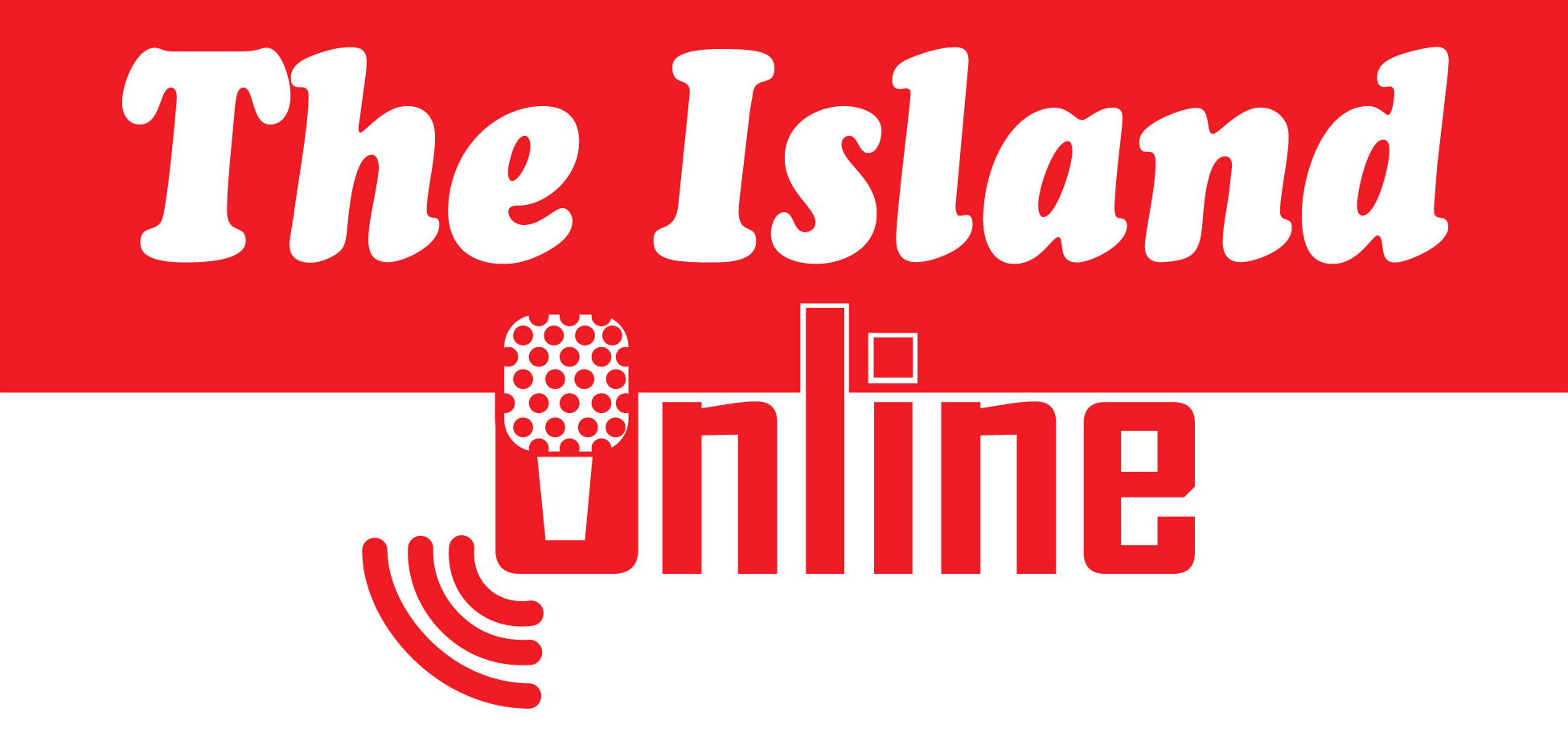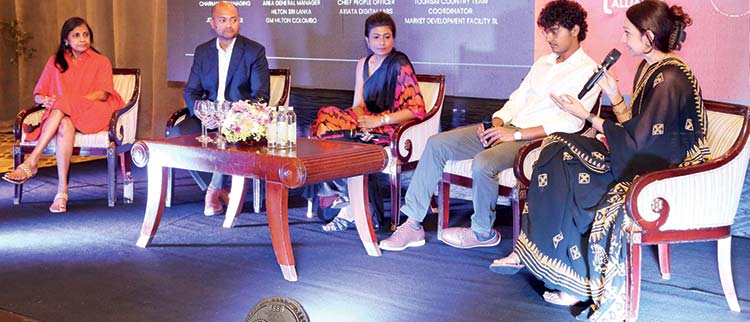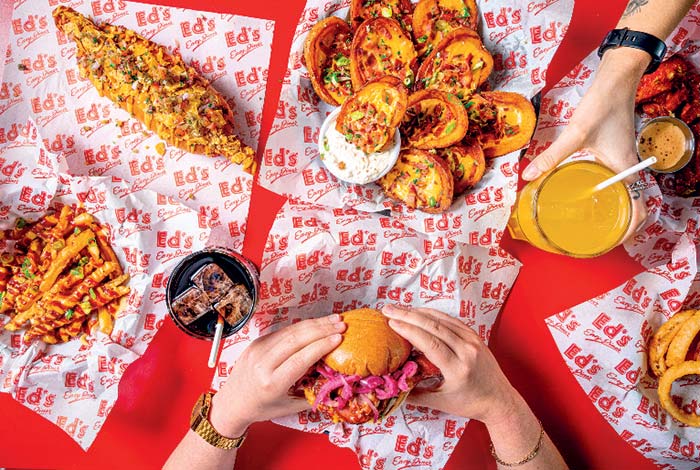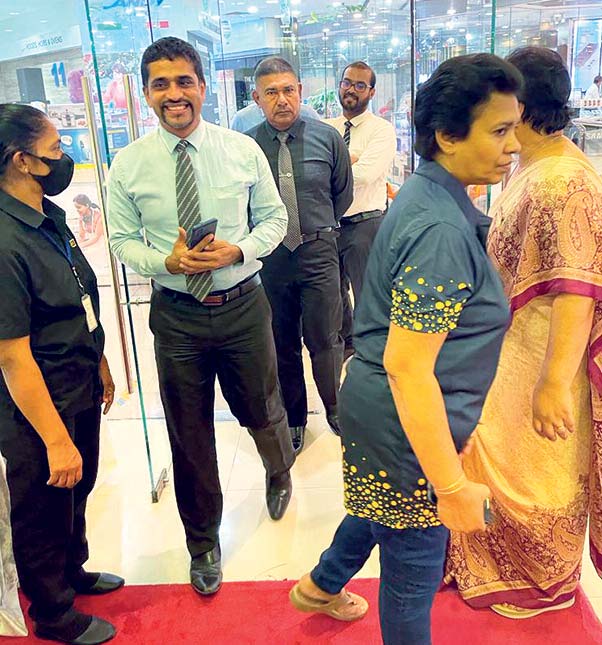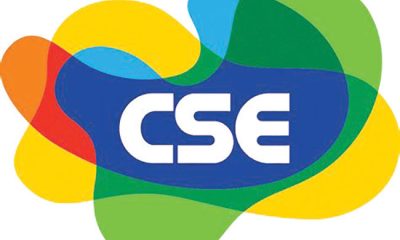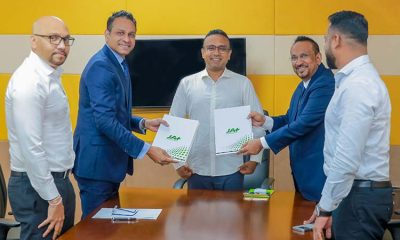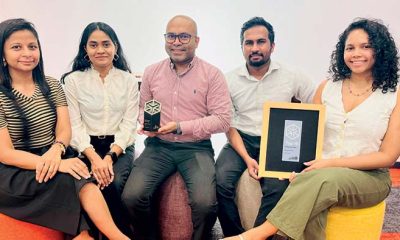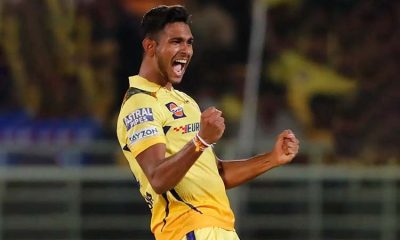Life style
The uncommon touch at ‘The Commons’
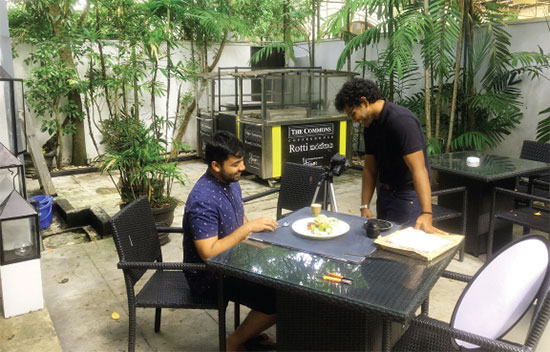
by Malinda Seneviratne
On the face of it the name of the small, cosy and friendly restaurant on Ernest De Silva Mawatha, Colombo 7, sounds pretentious. ‘The Commons’ after all refers to ‘land or resources belonging to or affecting the whole of a community.’ The restaurant is not common property. The onus, one would think, is on the owners to ensure ‘belonging.’
That’s about good service, mostly.
Now I’ve not bothered about the labels for I’ve dabbled enough in the advertising industry to know what’s what and what’s not. I’m old enough to focus on substance and leave it at that. For example, Sooriya Village, formerly a restaurant which was ‘surrounded’ by a practice studio, recording studio, bookshop, hangout place for anyone in any of the arts and a location for interviews, weddings, book launches etc., was not a ‘village.’ There was sun but not always, and anyway shade was what I preferred. There was warmth and like any village, there was a sense of belonging amidst multiple ways of differentiation.
The Commons. That’s what this is about. I’ve been here hundreds of times, literally. Sometimes I’ve ordered a coffee, sometimes food. Sometimes it’s been, much like Sooriya Village, an office of sorts. People meet me here. I ask them to come. Most days though, I just sit somewhere and write. Always received with a smile. No questions asked, except if I wanted some water. Indeed, sometimes, the water is served even without the question.
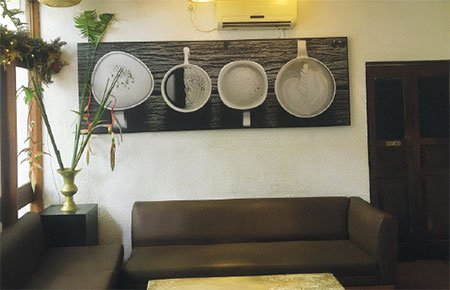 You could put it all down to familiarity and general Sri Lankan hospitality. After all, I’ve not surveyed others who sit here and hardly ever order anything.
You could put it all down to familiarity and general Sri Lankan hospitality. After all, I’ve not surveyed others who sit here and hardly ever order anything.
This morning, Thursday January 14, in a Covid-19 encumbered world, I realized that it was not just about familiarity. Here’s my story.
I walked in. My way was partially blocked by what I thought was a television crew.
‘Are you shooting a film?’ That’s what I asked.
‘No, it’s a shoot,’ I was told.
So I went to the open space at the back of the restaurant, sat down as I often did, opened my laptop and started to type.
The ‘crew’ moved to where I was. A camera on a tripod and a photographer. A young man was seated at the table. A young woman appeared to be arranging things. Food was served to a nicely laid table. I realized they were photographing the food.
‘Are you going to shoot the entire menu?’ I asked.
They smiled and affirmed it was so.
‘He won’t be able to eat all the food — you might as well give me some!’ I said in jest.
They shot. I wrote. A few minutes later, the owner, the legendary Harpo, arrived. He saw me and greeted me with that inimitable smile of his, brought his hands together a la Covid-19-induced greeting protocols and said ‘hi.’
I responded and repeated my observation: ‘if they are going to photograph the entire menu, you could distribute the food among all of us.’
In jest. Didn’t think twice about it. Went back to my work.
Fifteen minutes later, Prasanna, one of the waiters, came up to me with a platter of wraps. Cheesy eggs and bacon tortilla wraps with some dip that I couldn’t identify. Prasanna didn’t know that I didn’t eat meat. There was a hint of dismay in his eyes so I said ‘I will remove the bacon and eat the rest.’ I avoid eggs too, but I indulged. Great stuff. Lunch, for me. On the house.
I didn’t need that to feel at home. I’ve always felt at home. I don’t own ‘The Commons’ but I was always convinced I belonged here or rather that it belongs to me. Everyone, from the security guards Kingsley and Sudakaran, to the waiters (the long-standing ones and the students doing internships or side-jobs), the managers and Harpo himself never once said or did anything to make me doubt this.
I don’t recall having seen Pravin Jayasundere, a student at Law College who has been doing photo-shoots on the side for a few months now, and Rajeev Coltan, the ‘model,’ at ‘The Commons.’ I don’t know what they feel or how they’ll ‘see’ this place if they became visitors as regular as I have become. I don’t know if they’ll secure common ownership, so to speak. I don’t know if they’ll feel as ‘belonged.’
I can’t speak for others. This is my place, and I don’t mind others owning it, Harpo included. It’s common property in the middle of a high-end residential area of Colombo. Pretty uncommon.
Life style
Promoting women’s participation in tourism revival

 The Sri Lanka Tourism Alliance (SLTA), together with Australia’s Market Development Facility (MDF), hosted the ‘Women in Tourism: Advocate Engage Achieve’ event to engage with tourism industry leaders on co-creating solutions to increase women’s participation in the tourism industry.
The Sri Lanka Tourism Alliance (SLTA), together with Australia’s Market Development Facility (MDF), hosted the ‘Women in Tourism: Advocate Engage Achieve’ event to engage with tourism industry leaders on co-creating solutions to increase women’s participation in the tourism industry.
The discussion centered on the findings of a study, conducted by MDF in collaboration with The Tourism Alliance, that assessed the barriers to women’s employment in tourism. MDF shared key insights from the study, including provincial-level differences in factors influencing women’s decisions. These included women reporting a general lack of awareness of available opportunities, as well as concerns about negative societal perceptions. Referrals emerged as a key means by which women entered the industry, whereas the influence of parents and spouses emerged as factoring into the decision to enter tourism. Among the women working in the tourism industry that were surveyed, only 10% possessed an educational qualification beyond A/Ls, consisting of either university or technical college education.
The event brought together industry experts and key stakeholders to discuss the identified barriers to women’s employment in tourism and explore business models that enforced inclusive recruitment practices and advocacy programs.
Dr. Paul Zeccola, First Secretary (Political and Economic) to the Australian High Commission in Sri Lanka, was the Guest of Honour. Delivering the keynote address, he highlighted Australia is proud to be a part of the recovery of the tourism sector that holds much potential for investment and growth of Sri Lanka. He further added that the longstanding partnership between Australia and Sri Lanka is to build inclusive business models that strengthen women’s economic participation.
The event also featured a panel discussion examining challenges and solutions for integrating more women into the industry, followed by an interactive question and answer session. The panel comprised Shiromal Cooray, Managing Director Jetwing Travels; Manesh Fernando General Manager Hilton Colombo; Chandi Dharmaratne, Chief People Officer Dialog Axiata PLC; Mathi Thayanan, Tourism Country Team Coordinator, MDF Sri Lanka and facilitated by Dinushka Chandrasena.
The industry-leading panel shed light on some of the most pressing issues faced by the industry, followed by suggested strategies for fostering an inclusive workplace that unlocks the full potential of the diverse talent available in Sri Lanka.
“We believe that by harnessing the insights from this research, we can drive meaningful progress towards achieving gender parity while embracing diversity and inclusion within the tourism sector” said Malik J Fernando, Chair of the Tourism Alliance. “Through collaborations and collective action, we aim to create a more equitable industry that benefits businesses, employees, and the society at large”
MDF Sri Lanka Country Director Maryam Piracha further added that, “MDF is committed to strengthening partnerships that champion women’s engagement in the tourism sector. We aim to work with the private sector to encourage inclusive practices that combat negative perceptions and provide new opportunities for women. MDF is confident that this initiative will encourage the industry to embrace inclusive business strategies, enhancing business competitiveness while creating new avenues for women’s advancement.”
The presentation and panel discussion were followed by an evening where guests had the opportunity to engage in thought-provoking conversations aimed at resolving some of the most pressing issues related to Women in Tourism. Together, the Tourism Alliance and MDF are committed to supporting the growth of the industry as Sri Lanka’s Tourism sector recovers by encouraging businesses to invest in developing inclusive opportunities that offer diversified tourism services that cater to evolving global travel trends.
_Zanita
Pix by Thushara Attapathu
Life style
Embark on a gastronomic odyssey: Iconic British brands unveil their culinary charms in Sri Lanka

Get ready to tantalize your taste buds with an extraordinary culinary journey as some of the United Kingdom’s most esteemed dining destinations prepare to make a splash in Sri Lanka. From the enchanting flavours of Italy to the spicy delights of India and the timeless allure of American diners, these iconic brands are poised to deliver an unparalleled dining experience that celebrates diversity, innovation, and sheer culinary excellence a release said
The release also said at Carluccio’s, the essence of authentic Italian cuisine meets timeless eleganc . With a rich legacy spanning over 30 restaurants globally, including 22 revered establishments in the UK, Carluccio’s has captured the hearts and palates of food enthusiasts worldwide. Renowned for its unwavering commitment to quality ingredients and traditional recipes, Carluccio’s promises an unforgettable dining experience that transports you straight to the sun-drenched landscapes of Italy.
Meanwhile, Caffe Carluccio’s beckons guests to indulge in the finer pleasures of Italian coffee culture. Nestled in a cosy café setting, patrons can savour the finest Italian coffees and pastries, each sip and bite reminiscent of the vibrant streets of Rome or the bustling cafes of Milan.
The release stated at Ed’s Easy Diner, a slice of 1950s Americana right in the heart of Colombo. Immerse yourself in the nostalgia of classic diner fare, from juicy burgers to decadent milkshakes, all served up in a retro-inspired ambiance that transports you back to an era of rock ‘n’ roll and soda fountains.
At Giraffe there is a symphony of global flavours with local flair
to embark on a culinary voyage with Giraffe, where every dish tells a story of culinary exploration and discovery. From the aromatic spices of Asia to the fiery flavours of Mexico and everything in between, Giraffe’s diverse menu is a celebration of the world’s culinary tapestry. With a network of restaurants spanning the UK and beyond, Giraffe invites diners to broaden their horizons and embrace the rich diversity of global cuisine, all within the welcoming embrace of their local neighbourhood.
Cinnamon Collection: Elevating Indian Cuisine to New Heights
The release said the magic of Indian cuisine like never before with the Cinnamon Collection, a trio of dining destinations curated by celebrity chef Vivek Singh. Whether you’re craving the vibrant street food of Cinnamon Bazaar, the refined elegance of Cinnamon Club, or the innovative flair of Cinnamon Kitchen, each restaurant offers a unique and unforgettable journey through the flavours of India.
FishWorks: A Bountiful Selection of Oceanic Gastronomy
For lovers of seafood, FishWorks is a culinary oasis where freshness and flavour take centre stage. Dive into a menu bursting with succulent oysters, plump prawns, and perfectly grilled fish and shellfish, all sourced sustainably and prepared with the utmost care and attention to detail. With a reputation as one of the UK’s premier destinations for seafood lovers, FishWorks promises an unforgettable dining experience that celebrates the bounty of the ocean in all its glory.
Gourmet Burger Kitchen (GBK):
Crafting Burger Perfection, One Bite at a Time At Gourmet Burger Kitchen, every bite is a testament to culinary craftsmanship and innovation. Whether you’re craving a classic beef burger or an inventive creation featuring chicken, lamb, or plant-based ingredients, GBK offers a burger experience like no other. With a focus on quality ingredients, bold flavours, and creative flair, GBK has earned a loyal following of burger aficionados across the UK and beyond; with over 40 restaurants in their portfolio.
Life style
Gift of sight
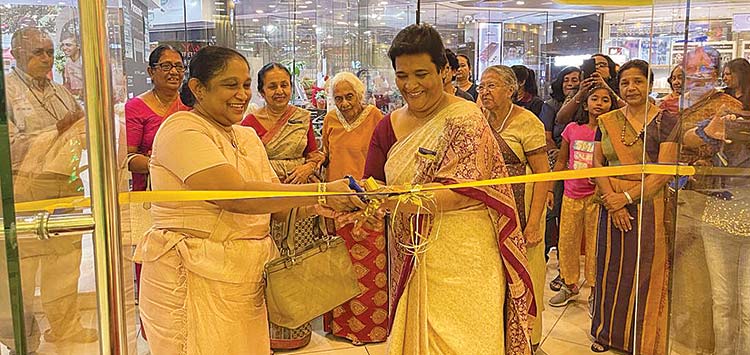
Mahamaya Girls College
“There is no greater joy than knowing you have changed someone’s life through the gift of sight”
The Mahamaya Girls College Kandy, Past Pupils’ Association, Colombo Branch successfully concluded a Charity programme by donating 62 eye lenses to the visually impaired and providing funds for eye surgeries and associated after care costs as per prescriptions in collaboration with Meth Neth Eye Clinic led by Community ophthalmologist Dr Asela Abeydheera .
The event was held recently at Dharma Shasthralya Privena in Piliyanyandala.
The eye surgeries will be fully sponsored with post medication facility at the Sinha Hospital in Panadura.
Ven Pethiagamuwe Rahula Nayaka thero conducted the religious service and blessed all the stake holders as well as the recipients of the funding.
The old girl’s fraternity of Mahamaya and all associated with this great initiative deserve the joy of shedding light upon some living in darkness and semi darkness. May all Mayans near and far join hands and be inspired to continue with the future social responsibility programmes of this Association.
-

 Business5 days ago
Business5 days agoCEAT Kelani launches three new radial tyre variants in ‘Orion Brawo’ range
-

 Business7 days ago
Business7 days agoDialog-Airtel Lanka merger comes centre stage
-

 Business4 days ago
Business4 days agoCeyline Travels and MBA Alumni Association of University of Colombo sign MOU
-

 Business7 days ago
Business7 days agoSLFEA appoints JAT as a Facilitation Partner for training painters to provide overseas employment opportunities
-

 Business5 days ago
Business5 days agoHayleys Fabric celebrates triple triumph at ISPO Textrends Spring/Summer 2026
-

 Business6 days ago
Business6 days agoUrgent appeal from Sri Lankan exporters on rupee appreciation
-

 Business4 days ago
Business4 days agoMaldivian to launch direct flights to Colombo
-

 Sports5 days ago
Sports5 days agoHello Madras, ‘ai api kaluda?’

